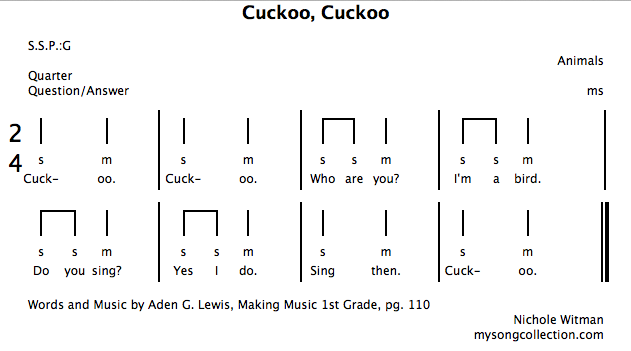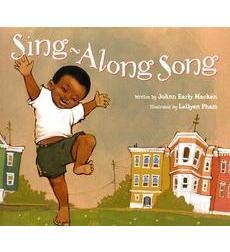Happy Halloween to all of my students and readers! To get into the spirit this week, my 1st graders read the story The Little Old Lady Who Was Not Afraid of Anything by Linda Williams and Illustrated by Megan Lloyd. This is a favorite activity among many music teachers that I know, but not all of my music colleagues may realize just how many ELA connections they make with this 10 minute activity.
Today the students learned that when I was in elementary school, the Illustrator, Megan Lloyd, came to my school! I got to meet her and even had her sign a book that she illustrated. We quickly reviewed the difference between an author and an illustrator, which is a Foundational Skill in the PA State ELA Standards.
In the story, the little old Lady goes for a walk in the woods and meets various pieces of clothing. Each piece of clothing makes a different sound, like the shoes who go "Stomp, Stomp" and we assigned different instruments to each sound. For example, the shoes were played by the woodblocks. By giving a summary of the story before we read it, I modeled another ELA skill that students will develop in their elementary classes: summarizing.
Finally, I read the book and the students listened for their piece of clothing to be mentioned. ELA standards also focus on listening as an important skill to develop. By giving the students the responsibility of playing their instrument when their assigned sound was mentioned in the book, the students were building their listening skills.
Many students started anticipating when they should play their instrument because they recognized patterns in the author's writing. In particular, the sounds were cumulative, meaning that each time they appeared in the book we started with the first and add one more to the list of sounds. The students were also able to anticipate when the instruments would play because there were repetitive phrase patterns in the book.
Finding patterns in music class is a skill that we are always working on
and discussing, even if it is not being done with an actual book. One pattern that we are currently working on in 1st grade is identifying question and answer phrases in songs. You can read more about how we started learning question and answer songs in my blog post about whisper phones.
As a final Happy Halloween treat, my first graders showed their knowledge of question and answer patterns by performing different motions for each part of the song. The piece we used is called "Halloween" composed by Moiselle Renstrom and was taken from the 1st Grade Music Connection Series by Silver Burdett and Ginn. Students identified the question by floating like a ghost, and they identified the answer by freezing and clapping. This is Mrs. Shull's 1st Grade class at Mill Road showing what they know! Happy Halloween!
As a final Happy Halloween treat, my first graders showed their knowledge of question and answer patterns by performing different motions for each part of the song. The piece we used is called "Halloween" composed by Moiselle Renstrom and was taken from the 1st Grade Music Connection Series by Silver Burdett and Ginn. Students identified the question by floating like a ghost, and they identified the answer by freezing and clapping. This is Mrs. Shull's 1st Grade class at Mill Road showing what they know! Happy Halloween!
















